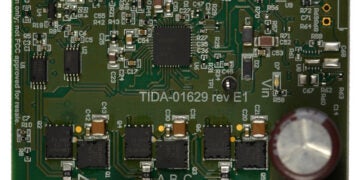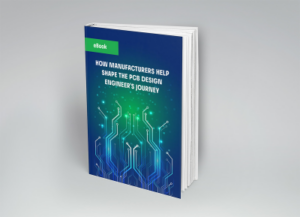![]()
By now, the component shortage is well-known even among the general populace. High-tech consumer device availability recently has had problems keeping stock, and subsidies by the U.S. and European governments to rebuild semiconductor manufacturing in the west was a major news item over the past summer. Amazingly, the indelible effect of electronics on day-to-day life only continues to grow.
Due to this pronounced role, however, everyone becomes increasingly aware of supply-side issues for electronics. Shortages due to several recent factors have resulted in stringent limitations placed upon buyers by suppliers, known as electronic component allocation. While most end-users may never discover the specifics, they are cognizant of the results: reduced availability, longer shipment times, and increased prices. Design teams need to be fully aware of the state of the component industry in 2023 to properly fortify their development process for the difficult realities of part shortages.
What is Electronic Component Allocation, and How Does It Work?
Electronic component allocation, or implementing restrictions on purchase sizes when supply is limited, is the fairest method manufacturers have for fulfilling orders. While it creates headaches for procurers who prefer to purchase bulk from a single supplier, it inhibits a single purchaser from hoarding a supply. Additionally, while unit prices will climb when demand surpasses supply, allowing multiple purchasing parties to have a bite of the apple prevents the seller from ratcheting the sales price to an exorbitant level. Although imperfect and unwelcome, manufacturers and buyers understand the need for an allocation system in the event of shortages.
The mechanisms of allocation differ between suppliers, but as general restrictive protocols, they may adopt some of the following frameworks:
- Binding Orders: To reduce the occurrence of double- or even triple-ordering as a way to reserve supplies tentatively, part buys may not be canceled or refunded by customer impetus.
- Order Hold: To manage their backlog and not grow lead times even further in times of severe shortage, companies may restrict customers from new purchases until manufacturing has had a chance to close the gap.
- Additional Measures: This could include extending order delivery dates or modifying the delivery size to serve the market as a whole.
In many ways, expecting the unexpected is the key to managing expectations during allocation periods. Designs must remain flexible with multiple assembly part variants to pivot among available stock. Extreme shortages may either require a winnowing of features or a delay in production, which will then have a knock-on effect on time to market.
Year-Over-Year Comparison in Product Lead Times
Collectively, the world is entering its fourth year of the COVID-19 pandemic, where government lockdowns lead to supply chain disruptions and a surge in consumer electronics purchases. Component supplies remain stubbornly short — common parts have seen lead times extend — albeit with some relief seemingly on the horizon. It would be nice to think international efforts to strengthen and globalize the supply chain have begun bearing fruit, but most of these investments will not begin paying off until the back half of the decade. Rather, it’s a chilling economic slowdown that has softened demand and led to a fork for manufacturers: some are slowing output, while others are continuing to produce in the hopes that market corrections in the later months will prevent a recurrence of supply shortages. For procurement, it means one thing: while straits are not as dire as last year, the unpredictability of the market should compel device manufacturers to shore up supplies at the earliest possible point of product development.
For a good overview of the current lead time landscape, consider the lead times compiled by Avnet roughly one year apart:
|
Component type |
2022 Lead Time (in weeks) |
2023* Lead Time (in weeks) |
Change in average |
|
Connectors |
12 – 20 |
9 – 21 |
-25% (low-end) +5% (high-end) |
|
Capacitors |
20 – 52+ |
20 – 52+ |
N/A |
|
Resistors |
10 – 34 |
20 – 52+ |
+100% (low-end) +53% (high-end) |
|
General passive components |
52+ |
52+ |
N/A |
|
SMD inductor |
10 – 38 |
8 -80 |
-20% (low-end) +111% (high-end) |
|
Lead inductor |
8 – 80 |
10 – 14+ |
+25% (low-end) -82% (high-end) |
|
Power devices |
12 – 48 |
12 – 48 |
N/A |
|
Electromechanical parts |
52+ |
52+ |
N/A |
*: Data from December 2022 Lead-Time Guide
What immediately jumps out is the spike in lead times of resistors and inductors. Most categories have held steady — not necessarily a great indicator, but at the very least, a sign that sourcing is not getting worse — while the availability of these simple passive devices has decreased. In general, devices are becoming more complex beyond their core functionality – the Internet of Things (IoT) is a driving force in the marketplace to improve communicability and relocate intense computational processing off–board. Even markets like automobiles have had their supply-demand imbalance ultimately come around to further strain availability and lengthen component lead times.
Manufacturers’ Market Response and External Factors
Looking forward, it’s important to understand that the marketplace’s instability is not solely driven by consumers. Some foundries are drawing product lines to a close due to significant capital expenditure dedicated to new technologies. While this is understandable from an industry perspective — innovation still needs to propel the market forward — manufacturers have a financial incentive to shutter current product lines in favor of new chip development. From the manufacturer’s perspective, the ongoing market situation is the perfect storm to introduce new components. Instead of continually chasing a backlog, suppliers can phase out products while dedicating their facilities to more profitable items.
Product discontinuance is nothing new to the world of electronic devices, but its challenges are exacerbated by the state of the supply chain. As challenging as sourcing and pricing may currently be, design teams must carefully weigh the state of a component’s lifecycle before inclusion into their devices. Flexibility with multiple assembly part numbers prevents development teams from being locked into a single component but may also require more frequent revisions where new components lack backward compatibility.
Beyond the market itself, geopolitical issues will likely continue to slow recovery. Suppliers face an uphill battle with a surge in the price of raw materials and energy, and conflict resolution is much more difficult to predict than market behavior. The industry will remain constrained without an equivalent globalization of input infrastructure for electronic components akin to the effort poured into new facilities.
At least for the short-term, electronic component allocation is here to stay, and every level of the design team needs to be equipped with the knowledge to navigate a fast-evolving supply chain. As designs can turn on a dime based on product availability, so should your library software. With Ultra Librarian, you can access millions of verified component libraries with all the supporting ECAD files and documentation to make integration into any board layout a breeze.
Working with Ultra Librarian sets up your team for success to ensure streamlined and error-free design, production, and sourcing. Register today for free.








